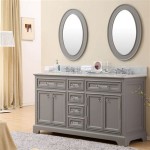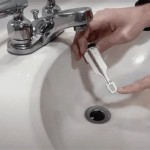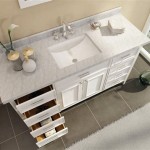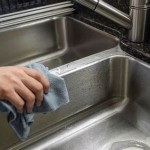The Benefits of Under Sink Water Filters with Faucet
Access to clean and safe drinking water is paramount for individual health and well-being. While municipal water systems strive to deliver potable water, contaminants can still be present due to aging infrastructure, local conditions, or treatment processes. Bottled water provides an alternative, but it is often a costly and environmentally unsustainable solution. An under sink water filter with a dedicated faucet offers a practical and efficient method for obtaining filtered water directly at the point of use.
An under sink water filter system with a faucet is installed discreetly beneath the kitchen sink, connecting to the cold water line. A separate, dedicated faucet is then mounted on the countertop, providing a source of filtered water on demand. This configuration keeps the filtration unit out of sight while offering convenient access to clean water for drinking, cooking, and other household needs. These systems are becoming increasingly popular due to their effectiveness, ease of use, and long-term cost savings compared to bottled water or pitcher filters.
Enhanced Water Quality and Purity
The primary advantage of an under sink water filter system lies in its ability to significantly improve the quality and purity of drinking water. These systems employ various filtration technologies to remove or reduce a wide range of contaminants, including sediment, chlorine, lead, bacteria, and other harmful substances. The specific contaminants removed depend on the type of filter used in the system.
Sediment filters, often the first stage in a multi-stage system, remove particulate matter such as sand, rust, and dirt. This improves water clarity and protects subsequent filter stages from clogging. Activated carbon filters are highly effective at removing chlorine, chloramine, and other organic compounds that contribute to unpleasant tastes and odors. These filters also improve the overall aesthetic quality of the water.
More advanced filtration methods, such as reverse osmosis (RO) and ultrafiltration (UF), can remove even smaller contaminants, including heavy metals, pesticides, and pharmaceuticals. RO systems use a semi-permeable membrane to separate water molecules from contaminants, resulting in highly purified water. UF systems use a similar membrane technology but with larger pore sizes, allowing them to remove bacteria and viruses while retaining beneficial minerals.
Furthermore, specialized filters are available for targeting specific contaminants of concern. For example, lead removal filters are designed to reduce lead levels in water, which is particularly important in areas with older plumbing. Similarly, filters designed to remove per- and polyfluoroalkyl substances (PFAS), also known as "forever chemicals," are becoming increasingly popular due to growing concerns about their presence in water supplies.
The result of these filtration processes is water that is cleaner, safer, and more pleasant to drink. By removing or reducing contaminants, these systems improve the taste, odor, and overall quality of the water, promoting better hydration and overall health.
Convenience and Cost-Effectiveness
Under sink water filter systems with a faucet offer significant convenience benefits compared to other water filtration methods. Unlike pitcher filters, which require frequent refills and manual pouring, under sink systems provide a continuous supply of filtered water directly from the dedicated faucet. This eliminates the need for constant monitoring and refilling, making it a more convenient option for busy households.
The dedicated faucet ensures that filtered water is readily available whenever needed. This is particularly useful for tasks such as filling water bottles, preparing beverages, and cooking. The separate faucet also prevents cross-contamination between filtered and unfiltered water, ensuring that only filtered water is dispensed from the dedicated source.
Over the long term, under sink water filter systems are also more cost-effective than bottled water. While the initial investment in a filter system may seem significant, the cost per gallon of filtered water is generally much lower than the cost of bottled water. This is especially true for households that consume large quantities of water. Furthermore, by reducing reliance on bottled water, these systems contribute to reducing plastic waste and promoting environmental sustainability.
The cost-effectiveness of under sink water filters also depends on the frequency of filter replacements. Filter cartridges typically need to be replaced every 6 to 12 months, depending on the type of filter and the volume of water filtered. However, the cost of replacement filters is generally lower than the ongoing cost of bottled water, making under sink systems a more economical choice in the long run.
Consider, for example, a family that consumes four bottles of water per day. Over a year, this equates to over 1400 bottles of water. The cost of bottled water can easily reach hundreds or even thousands of dollars per year. An under sink water filter system, on the other hand, may cost several hundred dollars initially, but the annual cost of replacement filters is typically much lower, resulting in significant savings over time.
Ease of Installation and Maintenance
While professional installation is always an option, many under sink water filter systems are designed for relatively easy DIY installation. Most systems come with clear instructions and the necessary hardware for connecting to the existing cold water line and installing the dedicated faucet. Basic plumbing skills and tools are typically sufficient for completing the installation process.
The installation process generally involves turning off the water supply, disconnecting the cold water line from the existing faucet, and installing a T-fitting to connect the filter system. The filter unit is then mounted under the sink, and the tubing is connected to the T-fitting and the dedicated faucet. Once the connections are secure, the water supply can be turned back on, and the system can be flushed to remove any air or debris.
Regular maintenance is essential for ensuring the optimal performance and longevity of the filter system. This primarily involves replacing the filter cartridges according to the manufacturer's recommendations. The frequency of filter replacements depends on the type of filter used, the quality of the incoming water, and the volume of water filtered. Most systems have indicator lights or timers that alert users when it is time to replace the filters.
Replacing the filter cartridges is a straightforward process that typically involves unscrewing the filter housing, removing the old cartridge, and inserting the new cartridge. The filter housing is then tightened, and the system is flushed to remove any air or debris. Some systems have quick-connect fittings that make filter replacements even easier and faster.
In addition to filter replacements, it is also important to periodically clean the dedicated faucet to prevent the buildup of mineral deposits or bacteria. The faucet can be cleaned with a mild detergent and water, and a soft brush can be used to remove any stubborn deposits. Regular cleaning helps to maintain the flow rate and hygiene of the filtered water.
Proper installation and maintenance are crucial for ensuring the effectiveness and longevity of the under sink water filter system. By following the manufacturer's instructions and performing regular maintenance tasks, users can enjoy clean and safe drinking water for many years to come.
Selecting the right under sink water filter with a faucet involves considering several factors, including the specific contaminants of concern in your water supply, the desired flow rate, the available space under the sink, and your budget. Testing your water is a crucial first step, as it provides valuable information about the types and levels of contaminants present. This information can then be used to choose a filter system that is specifically designed to address your water quality needs.
Different filter systems offer varying levels of filtration and contaminant removal capabilities. For example, a simple carbon filter may be sufficient for removing chlorine and improving taste and odor, while a reverse osmosis system may be necessary for removing more complex contaminants such as heavy metals and PFAS. The desired flow rate is also an important consideration, especially for households with high water consumption. Choose a system that can deliver an adequate flow rate to meet your needs without compromising water pressure.

Claryum Direct Connect

Ge Under Sink Dual Stage Water Filtration System With Faucet Gxk255tbn

Ge Dual Flow Replacement Water Filters Advanced Filtration Fqk2j The Home

Kraus Fs 1001 Ff 100mb Purita 12 Inch 2 Stage Under Sink Filtration System With Single Handle Drinking Water Filter Faucet Matte Black

Apec High Capacity Under Sink Water Filter System Cs 2500

Puretec Ts200 Dual Undersink Water Filter With Faucet

Express Water Modern Chrome Filter Faucet Drinking Reverse Osmosis Filtration System And Kitchen Sink Beverage

Frizzlife Under Sink Water Filter Quick Change Filtration System With Dedicated Faucet

Waterdrop Undersink Ultrafiltration Water System With Dedicated Faucet Healthier Elements

Under The Sink Direct Connect Two Stage Water System With Chrome Faucet







